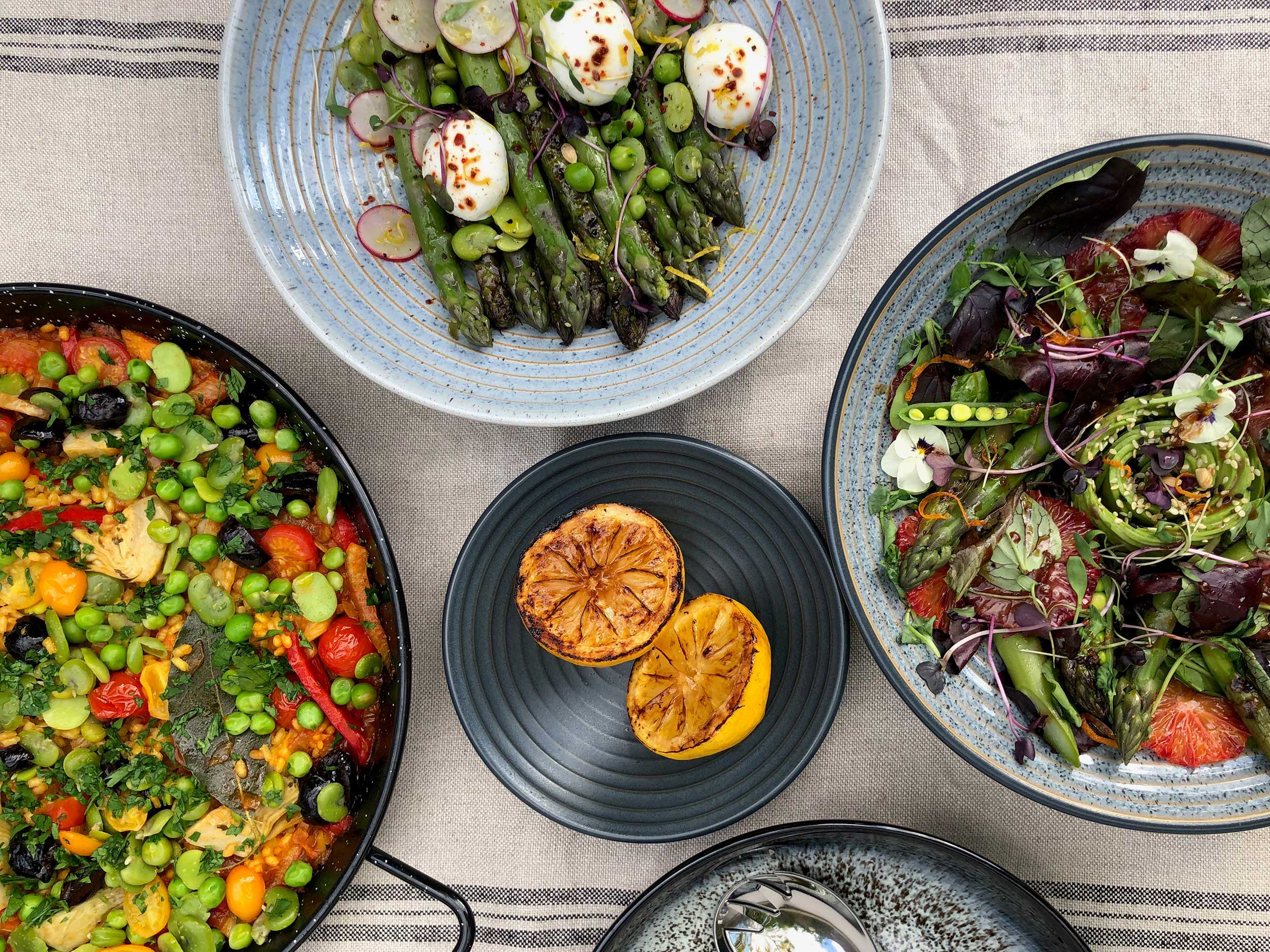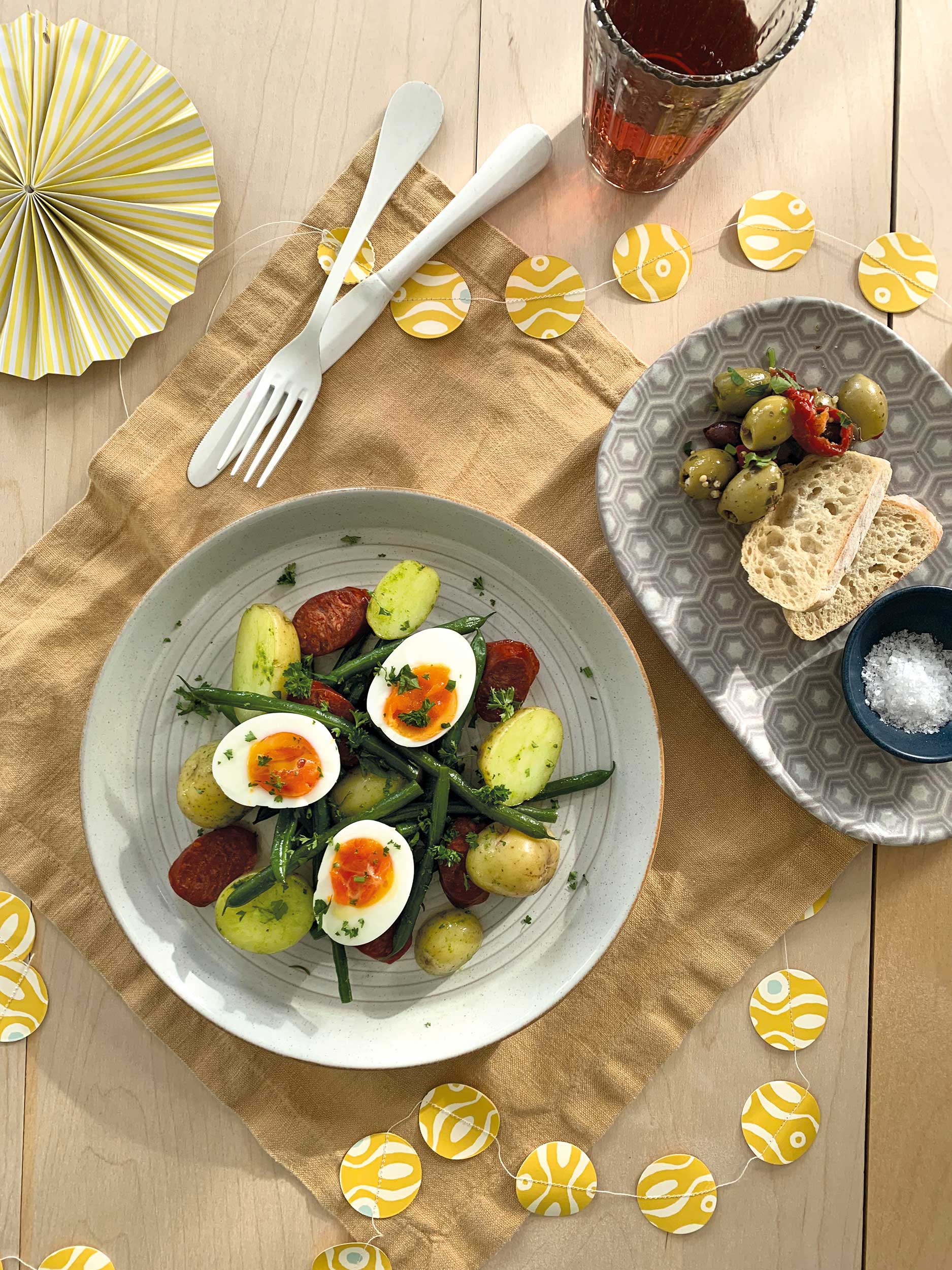Here, Hayley Baddiley from Denby explains more and gives us some tips for making our plates more colourful.
Colourful food is often a sign of healthy meals, as well as bringing a fun aspect to the dining table.
Having lots of different colours on our plates is often a sign that we have included a nutritious variety of foods in our dishes. For example, the Mediterranean diet is broadly agreed by scientists to be the healthiest one to follow because it combines lots of vegetables and fruit (BBC), and this diet also contains plenty of bright colours.
A study in 2019 also found that prompting people to eat a colourful meal increased the proportion of healthy foods eaten compared to typical meals (BMC Public Health). What’s more, we enjoy colourful food, and having a rainbow on our plates is much more sensorily stimulating when enjoying a meal (Hello Fresh).
So, how can you add some colour to your plate this spring, and make the most of the season becoming brighter?

Colours are a big part of our lives, and colour is an extremely important factor in whether we are tempted by the food in front of us too. This is for a number of reasons, including that colour is a useful method for us to determine whether a fruit or vegetable is ripe enough to eat. It also sets our expectations before we eat the food (Flavour Journal), and so the colour of our food is part of the overall experience of dining.
We can take note of the role that colour plays in our food consumption, in order to both eat healthier food and to enjoy our plates more.
The link between colourful food and health is essentially that the colours we see in food come from the nutrients that we can get from it. For instance, flavonoids (anthocyanins) and carotenoids (lycopene) give red vegetables and fruit like tomatoes, cherries, and strawberries their hue. These compounds are also antioxidants that help to protect our bodies from environmental damage. Beta-carotene, which gives carrots and butternut squash their orange colour, helps to keep our eyes and immune systems strong.
All the vegetables and fruit we eat contribute different nutritional benefits to our bodies, which is why it’s important to consume a variety of colours — to take in a variety of nutrients. Focus on a colourful diet with a variety of colours, and you’ll be well on the way to a healthy diet.
As the spring season begins, we might feel like adding more colour to our plates as the weather becomes brighter too. So, if you’re cooking a spring herb chicken pie recipe, you might pair it with a colourful salad of tomatoes, rocket, red onion and peppers. Adding side salads as well as sides of roasted or steamed vegetables is usually the easiest way to add some extra colour, and it can also make meals feel heartier because there are more choices on the table.
Another great way is to add a garnish of fresh herbs or greens to make your meal look instantly more colourful. If you are making a dessert, you can equally add garnishes of fresh or cooked fruit, or even add a side of a fruit salad to pair with your crumble or pastry. This will not only make your meals healthier, but they will also be more inviting visually, contributing to your enjoyment.

There are some easy ways to incorporate new fruits and vegetables into your diet, but the general principle is to find opportunities throughout your day where you can add in some extra colour.
Dried fruit and fresh fruit can be added to breakfast cereal and served alongside your familiar breakfast food.
Add more salad elements to your lunchtime sandwiches, pastas, or wraps.
Include fruit and vegetables in your snacks, e.g. carrot sticks and hummus, a glass of fruit or vegetable juice, dried fruit, fresh fruit, or lettuce wraps.
You can also try including new vegetables in recipes like pasta sauce, curry, and soup where they are included with familiar foods, and use this as a way to introduce yourself to new vegetables gradually. Or, you could try including new fruit or vegetables in smoothies as another way to introduce them.
Presenting your dishes well can also make a big difference — using some ceramic plates and bowls in bold colours inspired by nature can really make your fruits and vegetables pop more.
Whether you are new to exploring recipes or an experienced cook, there are lots of ways that you can make your plates more colourful this spring.
Use these tips to get you started and enjoy some varied healthy meals with friends and family.

If you’d like to discuss our catering services, please get in touch or fill in our contact form below:
Photo Credits to Steven Rooney, Emma White and Emily Davidson.
Website Designed by MacMartin.
| Cookie | Duration | Description |
|---|---|---|
| cookielawinfo-checkbox-analytics | 11 months | This cookie is set by GDPR Cookie Consent plugin. The cookie is used to store the user consent for the cookies in the category "Analytics". |
| cookielawinfo-checkbox-functional | 11 months | The cookie is set by GDPR cookie consent to record the user consent for the cookies in the category "Functional". |
| cookielawinfo-checkbox-necessary | 11 months | This cookie is set by GDPR Cookie Consent plugin. The cookies is used to store the user consent for the cookies in the category "Necessary". |
| cookielawinfo-checkbox-others | 11 months | This cookie is set by GDPR Cookie Consent plugin. The cookie is used to store the user consent for the cookies in the category "Other. |
| cookielawinfo-checkbox-performance | 11 months | This cookie is set by GDPR Cookie Consent plugin. The cookie is used to store the user consent for the cookies in the category "Performance". |
| viewed_cookie_policy | 11 months | The cookie is set by the GDPR Cookie Consent plugin and is used to store whether or not user has consented to the use of cookies. It does not store any personal data. |